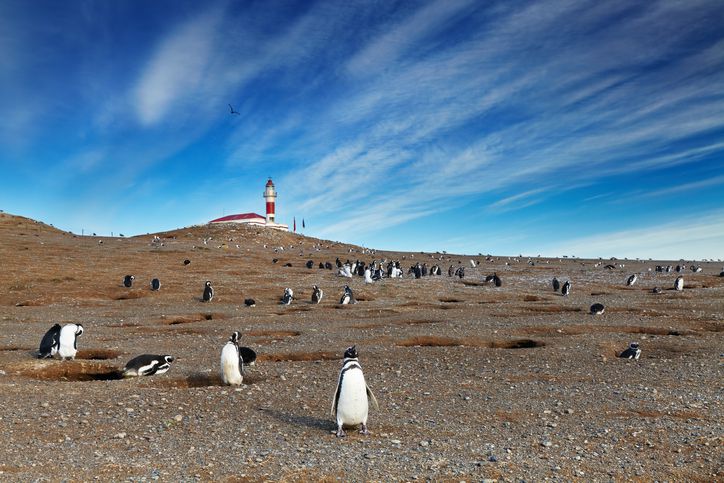Nestled in the southernmost tip of South America lies Tierra del Fuego, a land of breathtaking beauty and cultural richness. This remote region, overlapping Argentina and Chile, is home to the indigenous Selk’nam people, also known as the Onawo or Ona. Their history and traditions paint a vivid picture of resilience, adaptation, and profound connection to the natural world.
The history of the Selk’nam people stretches back thousands of years. Surviving in harsh environmental conditions required ingenuity and a deep understanding of the land. They developed sophisticated hunting techniques to capture prey effectively. The Selk’nam primarily subsisted on guanaco hunting, using small bows and arrows. Their diet also included other animals like pinnipeds, penguins, fish, shellfish, and native plant species. Occasionally, they had encounters with other indigenous groups or European explorers.
Traditionally, the Selk’nam were nomadic. They constructed temporary shelters from branches, hides, and other natural materials, which could be quickly assembled and disassembled as they moved across the landscape.
Selk’nam society was organized into distinct gender roles and social hierarchies. Men were responsible for hunting, warfare, and spiritual leadership, while women played essential roles in domestic activities, childcare, and gathering wild plants. Despite these divisions, both genders contributed equally to the community’s well-being, and women held significant influence within their families and social networks.
Spiritual Beliefs and Ceremonies
Central to Selk’nam society were their spiritual beliefs and ceremonial practices, which permeated every aspect of life. They revered the natural world as a manifestation of sacred forces and spirits, each with its own significance and power.
The Art of Body Painting of the Selk’nam
One of the most distinctive aspects of Selk’nam culture is their elaborate body painting, known as hain. Historically, body painting served as a form of spiritual expression and a means of communicating with the natural world. Intricate designs often depicted animals, geometric patterns, and mythical figures, each carrying symbolic significance. They were meticulously applied using natural pigments derived from plants and minerals. Today, visitors can witness demonstrations of this ancient art form and even participate in workshops to learn the techniques firsthand.
Encounters with European Colonizers
When the Spanish arrived in 1520, they encountered the Selk’nam in the northeastern part of Tierra del Fuego. The arrival of European explorers and settlers brought profound changes to Selk’nam society. Encroachment on their traditional lands, violent conflicts, and the spread of infectious diseases decimated their population and threatened their way of life. Forced assimilation into European culture through missions and government policies further eroded their cultural identity and autonomy.
Starting around 1880, British landowners, along with Chilean and Argentinian farmers, began colonizing Selk’nam lands, seeing them as perfect for raising sheep. They seized the territory between Patagonia and Tierra del Fuego, hiring bounty hunters to eradicate the Selk’nam population. The previously open spaces for nomadic hunters were gradually fenced off.
Coexistence between farmers and hunter-gatherers proved impossible. Many Selk’nam broke through these new barriers to continue hunting for sustenance, even hunting imported sheep, humorously referring to them as “white guanacos.” The newcomers cut off the ears of Selk’nam caught hunting sheep and took them to the farmers as proof of a “job done” to receive payment. Despite their limited numbers and basic weaponry, the Selk’nam retaliated by killing farmers and bounty hunters with their arrows.
However, it was an unbalanced conflict. Soon, elderly people, women, and children were captured and sold as domestic servants or sent to Salesian missions in Rio Grande, on the Argentinian side of Tierra del Fuego, or Dawson Island, on the Chilean side, to be “civilized.” Women were repeatedly raped and forced to marry non-natives. Diseases, malnutrition, evangelization, loss of culture, and separation from families decimated the population, leaving only young children.
Preserving the Heritage of the Selk’nam People
In recent years, efforts to preserve and revitalize Selk’nam culture have gained momentum, driven by indigenous communities and allies alike. Cultural initiatives, educational programs, and collaborative projects aim to safeguard traditional knowledge and practices for future generations. Travelers can support these efforts by engaging with indigenous-led tours and purchasing authentic handicrafts.
A Journey of Discovery
Embarking on a journey to Tierra del Fuego is not merely a physical voyage but a profound exploration of culture, history, and humanity. Through encounters with the Selk’nam people and their ancestral lands, travelers can gain insight into a way of life shaped by millennia of adaptation and resilience.
So, pack your bags, embark on an adventure, and uncover the mysteries of the Selk’nam people in the enchanting landscapes of Tierra del Fuego.
No comments yet
There are no comments on this post yet.




Leave a comment